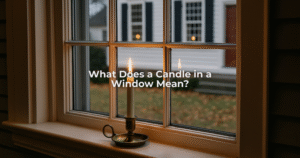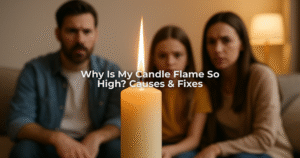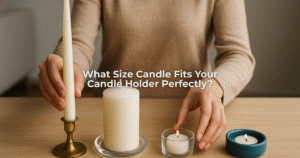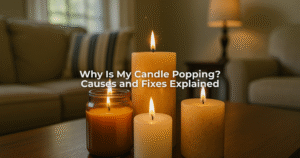No products in the cart.
How Many Candles for Kwanzaa? A Guide to Kinara Candles

Kwanzaa uses seven candles, called the Mishumaa Saba, placed in a candleholder known as the Kinara.
In this blog, I explain what each candle represents, how to arrange them in the Kinara, and the correct order to light them.
I also show you why the choice of candle quality matters and how the right candles make the Kwanzaa candle lighting ceremony more meaningful.
By the end, you will know exactly how many candles you need for Kwanzaa and how to use them properly in your celebration.
How Many Candles Are Used for Kwanzaa?
The exact seven candles are used in Kwanzaa. These seven candles represent the core of the celebration and are arranged in the Kinara, a special holder designed for Kwanzaa. The arrangement includes:
- One black candle at the center.
- Three red candles are placed on the left.
- Three green candles are placed on the right.
The black candle Kwanzaa tradition places unity at the center of the celebration.
The red candles of Kwanzaa acknowledge the struggles and sacrifices of the past, while the green candles of Kwanzaa look ahead to growth and hope for the future.
Kwanzaa candles are traditionally unscented tapers, but today many families use hand-poured or eco-friendly options made from soy or beeswax.
Some choose natural finishes, while others prefer bold colors to highlight the red, black, and green palette.
The type of candle does not change the ritual, but quality and burn time matter. A well-crafted candle gives each night of Kwanzaa a steady, meaningful flame.
The Colors and Meanings of Kwanzaa Candles
The seven candles of Kwanzaa, called the Mishumaa Saba, are placed in the Kinara with purpose.
Their colors—black, red, and green—mirror the Pan-African flag, and each one ties directly to a principle of Nguzo Saba.
- The black candle sits in the center as the unity candle in Kwanzaa, representing Umoja (Unity) and the strength of community.
- The red candles on the left symbolize struggle and sacrifice. They connect to principles such as Kujichagulia (Self-Determination), Ujima (Collective Work and Responsibility), and Ujamaa (Cooperative Economics).
- The green candles on the right represent hope and the future, aligned with Nia (Purpose), Kuumba (Creativity), and Imani (Faith).
During the candle lighting ceremony, each evening highlights one principle, giving families a chance to reflect and pass on values across generations.
In my experience making candles, many families prefer hand-poured or eco-friendly Kwanzaa candles that hold rich, bold colors and burn cleanly, ensuring the ritual feels both meaningful and lasting.
How to Light Kwanzaa Candles?
The lighting order of the candles follows a meaningful sequence. On the first day of Kwanzaa, the black candle is lit to represent unity.
On each following night, an additional candle is lit in a specific order:
- After relighting the black candle each evening, families alternate between the red and green candles.
- The first red candle is lit, followed by a green one on the next night, and so on, until all seven candles are glowing by the final evening.
This rhythm of lighting symbolizes balance. The red side ensures that past struggles are never forgotten, while the green side affirms the vision of a better tomorrow.
The candle order Kwanzaa pattern gives a sense of progress throughout the week, as the Kinara grows brighter night after night.
In many households, this ritual becomes the centerpiece of the holiday traditions.
I’ve witnessed families singing, sharing stories, or even incorporating African drumming during the ceremony.
The act of striking a match, watching the flame rise, and passing light from one candle to the next transforms wax into a living reminder of resilience and hope.
Final Thoughts
So, how many candles for Kwanzaa are there? The answer is seven: one black, three red, and three green.
Together, they form the Mishumaa Saba, placed in the Kinara to reflect unity, struggle, and hope.
But beyond the number lies the deeper meaning. Each candle supports the Kwanzaa rituals by embodying one of the Nguzo Saba principles, while their colors tie back to Pan-African symbolism.
The candle lighting ceremony turns the act of striking a match into a week-long journey of reflection and renewal.
For families, choosing the right Kwanzaa candles makes the celebration even more special.
Whether they are handmade, eco-friendly, or traditional paraffin tapers, the candles become part of cherished holiday traditions.
As someone who has worked with wax for years, I’ve learned that when a flame meets color and meaning, it goes beyond light. It becomes a story that continues year after year.

Nav Preet is the founder and creative soul behind Karigar Candles. Inspired by heritage, nature, and the warmth of handmade artistry, she crafts candles that do more than glow—they evoke emotion. Through this blog, she shares her love for scents, styling, and mindful living, one flame at a time.
Creative Head at Karigar Style






